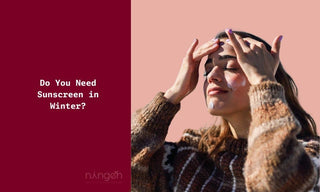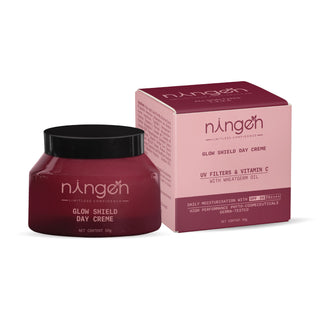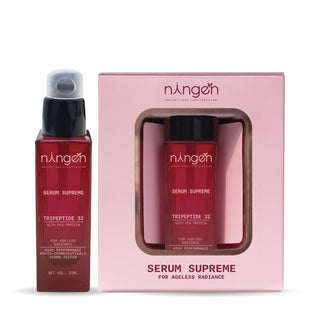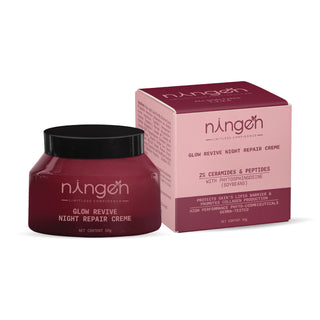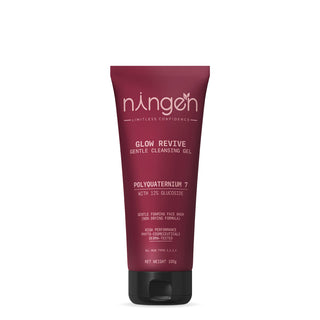TLDR
Yes, you absolutely need sunscreen in winter! UV rays don't hibernate when temperatures drop. Winter sun can be just as damaging, especially with snow reflection increasing UV exposure by up to 80%. SPF is your skin's non-negotiable defense against premature aging, hyperpigmentation, and skin cancer, no matter the season.
When the chill sets in and the sun seems to take a backseat, most people assume sunscreen is only a summer essential. But the truth is, you absolutely need sunscreen in winter. Even on cold, cloudy days, UV rays don’t clock out. They continue to penetrate your skin, causing dryness, dullness, premature aging, and even long-term sun damage.
Think of winter as the season when your skin’s defense system is most vulnerable, and sunscreen is its year-round shield. Snow, ice, and high altitudes can actually amplify UV exposure by reflecting sunlight onto your face, doubling the impact.
In this blog, we’ll decode whether you need sunscreen in Winter or not. So before you tuck away your SPF, let’s redefine your cold-weather skincare playbook, because protection doesn’t stop when the temperature drops.
In this Guide;
Why Winter Sun Is Secretly Worse Than You Think?
Why SPF Is the Heart of Your Daily Skincare Routine?
The Winter Sunscreen Rules You Need to Follow
Choosing Your Winter Sunscreen: What Actually Works
The Real-Life Winter SPF Strategy
Why Winter Sun Is Secretly Worse Than You Think?
UV Rays Don't Take a Winter Vacation
The sun sits at a lower angle during the winter months, but UV radiation remains powerful year-round. Here's what's still hitting your skin:
UVA rays (aging rays): These penetrate deeper into your skin, breaking down collagen and elastin. They pass through clouds and windows effortlessly, yes, even on gloomy winter days. UVA intensity remains relatively constant throughout the year, which means your risk of photoaging never takes a break.
UVB rays (burning rays): While slightly less intense in winter, they're still present and capable of causing DNA damage that leads to skin cancer.

The Snow Reflection Factor
Love winter sports? Here's a scary stat: Snow reflects up to 80% of UV radiation. That means you're getting hit twice. Once from the sun and again from the ground, bouncing rays back at your face.
For context, water reflects only about 25% of UV rays, and sand reflects roughly 15%. Snow is the ultimate UV amplifier, according to the Skin Cancer Foundation.
Altitude Amplifies Everything
Every 1,000 feet above sea level increases UV exposure by 8-10%. Planning a ski trip? At 8,000 feet, you're facing UV levels comparable to a beach in summer, but most people forget sunscreen because it feels cold.
Also read: Does sunscreen prevent tanning?
Why SPF Is the Heart of Your Daily Skincare Routine?
Let's get one thing crystal clear: Sunscreen isn't skincare, it's healthcare.
You can spend hundreds on serums, retinols, and vitamin C, but without daily SPF, you're essentially pouring money down the drain. Here's why:
1. It Prevents 80% of Visible Aging
According to research published in the Annals of Internal Medicine, up to 80% of facial aging is caused by UV exposure. Those fine lines, wrinkles, and age spots? Most of them are preventable with consistent sunscreen use.
Think of SPF as the ultimate anti-aging ingredient, more powerful than any premium face cream.
2. It Protects Your Other Products
Using retinol, vitamin C, or exfoliating acids? These actives make your skin more photosensitive. Skipping sunscreen means you're actually increasing sun damage while trying to improve your skin. Your expensive products are working against you without SPF backup.
3. It Guards Against Hyperpigmentation
Melasma, post-inflammatory hyperpigmentation, and dark spots worsen with UV exposure, even in winter. If you're battling uneven skin tone, sunscreen is your first line of defense, according to the American Academy of Dermatology.
4. It's Your Cancer Shield
Skin cancer is the most common cancer in the United States, with one in five Americans developing it by age 70. Daily SPF use reduces squamous cell carcinoma risk by about 40% and melanoma risk by 50%, according to the Skin Cancer Foundation. While India records comparatively fewer cases due to higher melanin levels, rising UV exposure and lifestyle changes are increasing the incidence, especially in urban areas, making daily sunscreen protection equally critical across all seasons.
The Winter Sunscreen Rules You Need to Follow
Rule #1: SPF 30 Minimum, Every Single Day
Dermatologists agree: SPF 30 is the baseline for adequate protection. It blocks approximately 97% of UVB rays. SPF 50 blocks about 98%, only a marginal increase, but worth it if you're outdoors frequently.
Apply at least a nickel-sized amount for your face and ears (about ¼ teaspoon). Most people use only 25-50% of the recommended amount, which drops SPF 30 protection down to SPF 10-15.
Rule #2: Reapply Every Two Hours (Or More)
This is where most people fail. Sunscreen breaks down with sun exposure, oxidation, and sweat. If you're outside, such as shoveling snow, skiing, or walking your dog, reapply every two hours at a minimum.
For daily indoor life, a morning application, plus a midday reapplication if you're near windows, is generally sufficient.
Rule #3: Don't Forget These Sneaky Spots
-
Ears: A common site for skin cancer that most people miss
-
Eyelids: Incredibly vulnerable to UV damage
-
Lips: Use SPF lip balm (reapply frequently)
-
Neck and chest: These areas show age quickly without protection
-
Hands: Constantly exposed, especially while driving
Rule #4: Clouds Don't Count as Protection
Up to 80% of UV rays penetrate cloud cover. That dreary February day? You're still being exposed. Overcast weather creates a false sense of security that leads to unexpected sunburns, especially in reflective environments like snow.
Rule #5: Indoors Isn't Safe Either
If you're near windows, UV exposure happens. UVA rays pass through glass easily, which is why dermatologists recommend sunscreen even on work-from-home days. That sunny spot where you drink your morning coffee? It's aging your skin.
Choosing Your Winter Sunscreen: What Actually Works
Not all sunscreens are created equal for winter conditions. Here's what to look for:
Mineral vs. Chemical: The Winter Breakdown
Mineral (Physical) Sunscreens: Contain zinc oxide or titanium dioxide. They sit on the skin's surface and physically deflect UV rays. Great for sensitive skin, but can leave a white cast and feel drying in cold weather.
Chemical Sunscreens: Ingredients like avobenzone and octinoxate absorb UV rays. They're typically more cosmetically elegant and hydrating, better for winter dryness.
The winter winner? Consider a hybrid formula or a moisturizing sunscreen that won't exacerbate dry, cold-weather skin.
Must-Have Ingredients for Winter SPF
Look for sunscreens with these bonus ingredients:
-
Hyaluronic acid: Hydrates and plumps
-
Ceramides: Repairs skin barrier (crucial in harsh winter weather)
-
Niacinamide: Calms irritation and reduces redness
-
Glycerin: Locks in moisture
These additions transform sunscreen from purely protective to genuinely nourishing.

Also read: Beginners' guide to sunscreen.
The Real-Life Winter SPF Strategy
Let's make this practical. Here's how to actually incorporate sunscreen into your winter routine without overthinking it:
Your Morning Routine
-
Cleanse your face
-
Apply serums (vitamin C, hyaluronic acid, etc.)
-
Moisturize if needed (or skip if your sunscreen is hydrating enough)
-
Apply SPF as the final step, waiting 1-2 minutes before makeup
Throughout Your Day
-
Keep a travel-size sunscreen in your bag for reapplication
-
Use SPF setting sprays over makeup for easy touch-ups
-
Set phone reminders if you struggle to remember reapplication
-
Apply SPF to your hands after washing them
Special Winter Scenarios
Skiing/Snowboarding: Apply SPF 50 before hitting the slopes, reapply every 1-2 hours. Don't forget your lips, ears, and under your chin (snow reflection from below).
Winter Hiking: Even on wooded trails, UV exposure is significant. Use water-resistant SPF 30+ and reapply after sweating.
Daily Commute: Apply before leaving home. If you drive with sun exposure, keep SPF in your car for hand reapplication.
Debunking Winter Sunscreen Myths
Myth: "I'm not outside much, so I don't need it."
Window exposure, brief outdoor trips (walking to your car, grabbing lunch), and reflected light all add up. Cumulative UV exposure causes damage over time—it's not just about beach vacations.
Myth: "My makeup has SPF, so I'm covered."
Unless you're applying a quarter teaspoon of foundation (you're not—that would be cakey and obvious), you're getting minimal SPF protection. Think of makeup SPF as a bonus, not your primary defense.
Myth: "Dark skin doesn't need sunscreen in winter."
Melanin provides natural protection equivalent to about SPF 13, but that's not enough. People with darker skin tones still experience sun damage, premature aging, and skin cancer—though cancer may be diagnosed later and at more advanced stages. Everyone needs SPF protection, according to the American Academy of Dermatology.
Myth: "Sunscreen prevents vitamin D absorption."
While SPF does reduce vitamin D synthesis, most dermatologists recommend getting vitamin D through diet or supplements rather than intentional sun exposure, which carries significant cancer risks.
The Bottom Line
Here's what you need to remember: UV radiation is relentless, consistent, and cumulative. The damage you're experiencing today might not show up for years, but it's happening every time you skip sunscreen.
Winter doesn't give your skin a break; it actually creates conditions that can worsen sun damage through reflection and altitude exposure.
The good news? Protecting yourself is simple:
✅ Apply SPF 30+ every morning, 365 days a year
✅ Reapply every two hours when outdoors
✅ Don't skip cloudy, cold, or indoor days
✅ Treat sunscreen as the foundation of your skincare routine
Your 50-year-old self will thank you for the decade of consistent SPF use you start today.
What's your biggest challenge with wearing sunscreen in winter? Drop a comment below, I'd love to help you troubleshoot your routine!
Frequently Asked Questions
1. Do I really need sunscreen in winter?
Yes, absolutely. UV rays penetrate clouds and remain strong year-round. UVA rays, which cause aging and skin cancer, don't diminish in the winter months.
2. What SPF should I use in winter?
Dermatologists recommend at least SPF 30 for daily use, year-round. If you're skiing, hiking, or spending extended time outdoors with snow reflection, opt for SPF 50.
3. How often should I reapply sunscreen in winter?
Reapply every two hours when outdoors. For indoor activities, a morning application is typically sufficient unless you're near windows for extended periods.
4. Does snow really reflect UV rays?
Yes, snow reflects up to 80% of UV radiation, significantly more than water (25%) or sand (15%). This doubles your UV exposure during winter outdoor activities.
5. Can I skip sunscreen on cloudy winter days?
No. Up to 80% of UV rays penetrate cloud cover. Overcast days still pose a significant risk for sun damage and should never be an excuse to skip SPF.
6. Is sunscreen necessary indoors during winter?
If you're near windows, yes. UVA rays pass through glass and cause cumulative damage. Apply sunscreen during your morning routine regardless of your plans.
7. What's the best type of sunscreen for dry winter skin?
Look for hydrating chemical sunscreens or hybrid formulas with ingredients like hyaluronic acid, ceramides, or glycerin. These protect while combating winter dryness.
8. Do people with darker skin need winter sunscreen?
Yes. While melanin provides some natural protection, it's not sufficient to prevent sun damage, premature aging, or skin cancer. Everyone needs daily SPF protection.
9. Will sunscreen prevent my body from making vitamin D in winter?
SPF can reduce vitamin D synthesis, but dermatologists recommend obtaining vitamin D through diet or supplements rather than risking sun damage through unprotected exposure.
10. What areas do people most commonly forget when applying winter sunscreen?
The most neglected areas are the ears, eyelids, lips, neck, chest, and hands. These spots are vulnerable to both sun damage and skin cancer and should never be skipped.
Resources & References:


